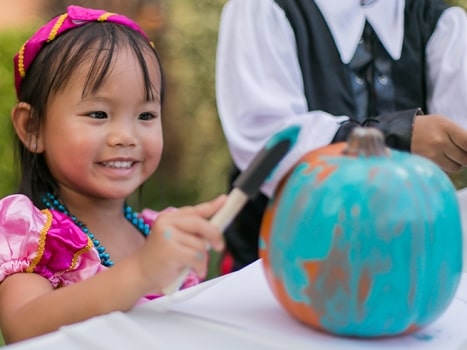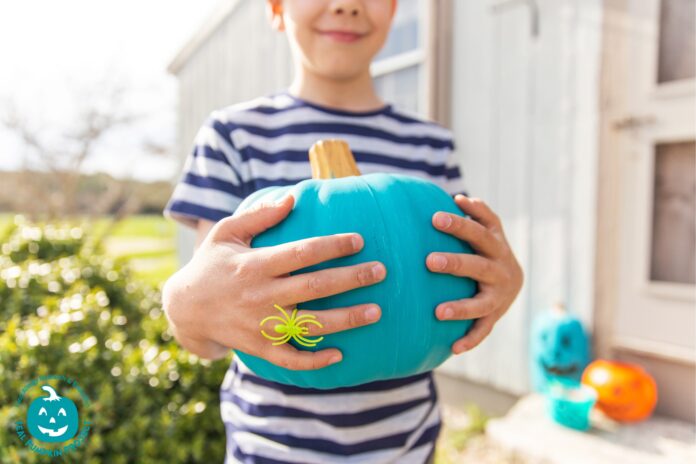With ooey-gooey candy and awesome costumes, it’s no wonder Halloween is among the most beloved holidays, especially among little ones. Treats aside though, All Hallow’s Eve can be trickier for children with special needs. Here are ways to celebrate an inclusive Halloween inclusive:
Inclusive Halloween… Food for Thought
Food allergies can be seriously frightening and potentially life-threatening, especially on Halloween because of an increased risk of allergen exposures and reactions. 1-in-13 children in the U.S. – that’s roughly two kiddos in every classroom – has a food allergy (including my son). According to Food Allergy Research and Education (FARE), many popular Halloween candies contain nuts, milk, egg, soy or wheat, which are some of the most common allergens in both children and adults. Additionally, some miniature or fun-size versions of candy contain different ingredients than their full-size counterparts. Furthermore, some miniature candies may not have ingredient labels, so it is hard to determine whether these goodies are, well, good or bad for allergy sufferers.
To ensure that trick-or-treaters with food allergies can fully participate in an inclusive Halloween experience, join in the Teal Pumpkin Project. This food allergy awareness campaign, led by FARE and partnering organizations, promotes safety and inclusion for kids with food allergies, as well as others for whom candy is not an option. This may include those with food intolerances, eosinophilic esophagitis (EoE), celiac disease, food protein-induced enterocolitis syndrome (FPIES), feeding tubes, diabetes, anyone with a special diet or even trick-or-treaters just too young to consume hard-to-chew snacks.
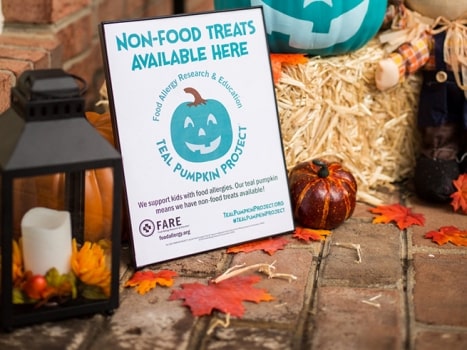
[FYI, the Epilepsy Foundation also promotes the Purple Pumpkin Project. To learn about this awareness and fundraising effort, visit the organization’s website.]
How to participate in the Teal Pumpkin Project for an inclusive Halloween:
- Purchase non-food treats (in addition to or instead of candy).
- Paint or buy a teal pumpkin at a craft store or pharmacy; and/or simply print a free sign (in English, Spanish or French). Place your teal pumpkin and/or sign in front of your home.
- Then, offer trick-or-treaters a choice of non-food items!
“This campaign provides a great opportunity for communities to show their support of kids with food allergies who typically cannot enjoy trick-or-treating in the same way that their friends do,” said Lois A. Witkop, Chief Advancement Officer at FARE. “As a result of the Teal Pumpkin Project, more Americans are recognizing that food allergies are very serious and have a major impact on a child’s quality of life.”
Non-food treats can be just as affordable and enjoyable as candy. Available at dollar stores, party supply retailers and online suppliers (like Amazon and Oriental Trading), some options include:
- Glow bracelets
- Pencils, pens, crayons or markers
- Bubbles
- Halloween erasers or pencil toppers
- Mini slinkies
- Kazoos or noisemakers
- Bouncy balls
- Spider rings and vampire fangs
- Playing cards
- Bookmarks
- Stickers
To help your child with food allergies have an inclusive Halloween night, consider dropping off safe treats to your neighbors before the holiday, if feasible. That way they are ready to outfit your child with non-allergen treats! FARE cautions that some non-food items can still contain food allergens, such as some brands of moldable clay which contain wheat. Additionally, try to choose latex-free items, as there are children who have latex allergies.
To find help families locate non-food options, add your home to the Teal Pumpkin Project participation map. You can also help spread the word on social media using the hashtag #TealPumpkinProject (and tag AmeriDisability too).
Switch Witch Helps Create an Inclusive Halloween
Krista Edgren, a Florida mom, said she learned of a Halloween hack through an allergy support group on Facebook. Her son, Jase, is allergic to eggs and peanuts. “Last year we implemented the Switch Witch,” she told AmeriDisability, adding, “Basically a witch comes to take the majority of the candy and switches it out with a toy.”
The concept of a whimsical character is already embraced for other holidays — like Elf on The Shelf for Christmas and Peep on the Perch for Easter — so the Switch Witch could be a fun and purposeful concept too!
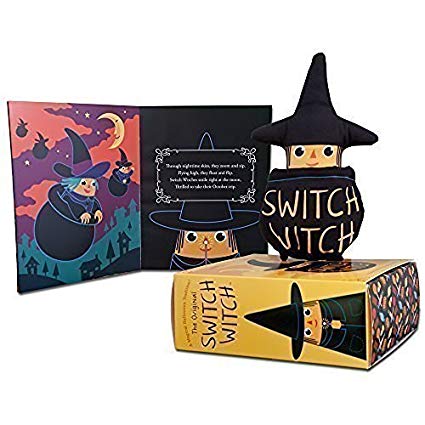
Claiming to be the original, The Switch Witch book and doll was created by a mom who wanted a solution for her diabetic daughter. It centers on a Halloween tradition of children getting rid of sugary treats in exchange for something healthier. This approach could be a parenting hack to address many concerns — food allergies, limiting junk food, promotion of sharing/exchanging, etc. Other storybooks with similar storylines are also available on Amazon.
Inclusive Halloween Language?
“Trick-or-Treat!” Everyone knows that’s what costumed children are supposed to say at each doorstep. Some people may assume that children who don’t shout the famed phrase are simply rude… when, in fact, they are nonverbal or have a disability. Several online shops sell personalized bags (and t-shirts) etched with communication such as, “Hello. I have special needs. I cannot say trick-or-treat but I am trying!” Find options on Amazon and Etsy. Of course, you can always make your own too.
Also, check out this informative video from ‘ASL Meredith’ featuring common Halloween words translated into American Sign Language.
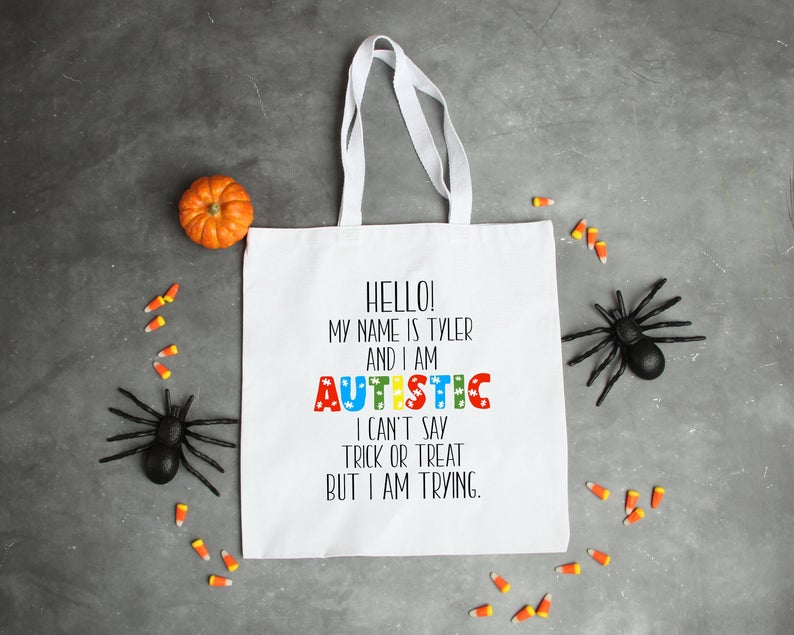
Not So Sensational for the Senses
An overload of sugar is understood but, for some families, a sensory overload is top of mind. In the weeks before Halloween, you can help your child prepare for the scare with Halloween-themed books and movies. Talk to your child about what may occur at Halloween happenings and while trick-or-treating.
If your child has autism spectrum disorder or a sensory condition, you can write your own social story with directives or download a free trick-or-treat sequence card from TeachersPayTeachers.com. You can even give specific instructions to help curb meltdowns, such as “We’re going to trick-or-treat at ten houses and return home before dark” or “You can eat four pieces of candy once I check the wrappers.” Consider doing a practice run by visiting supportive neighbors.
Halloween festivities and decorations often include various sounds and noises which can be tricky for children who are sensory-sensitive. Some parents have opted to use earplugs and, to lessen fear of the dark, carry a flashlight. Try to schedule breaks, especially after a block of stimulating houses. Take a few minutes to settle down and hydrate.
A bit tamer than rowdy house-to-house tactics, trunk-or-treat events have become a popular alternative in recent years. Often held at churches, community sites and schools, trunk-or-treats showcase Halloween-decorated cars within a parking lot. Think of it as an inclusive Halloween tailgate! Just like going door-to-door, children can go trunk-to-trunk to play games and gather goodies. The paved ground also sets the stage for improved accessibility for wheelchair users and others.
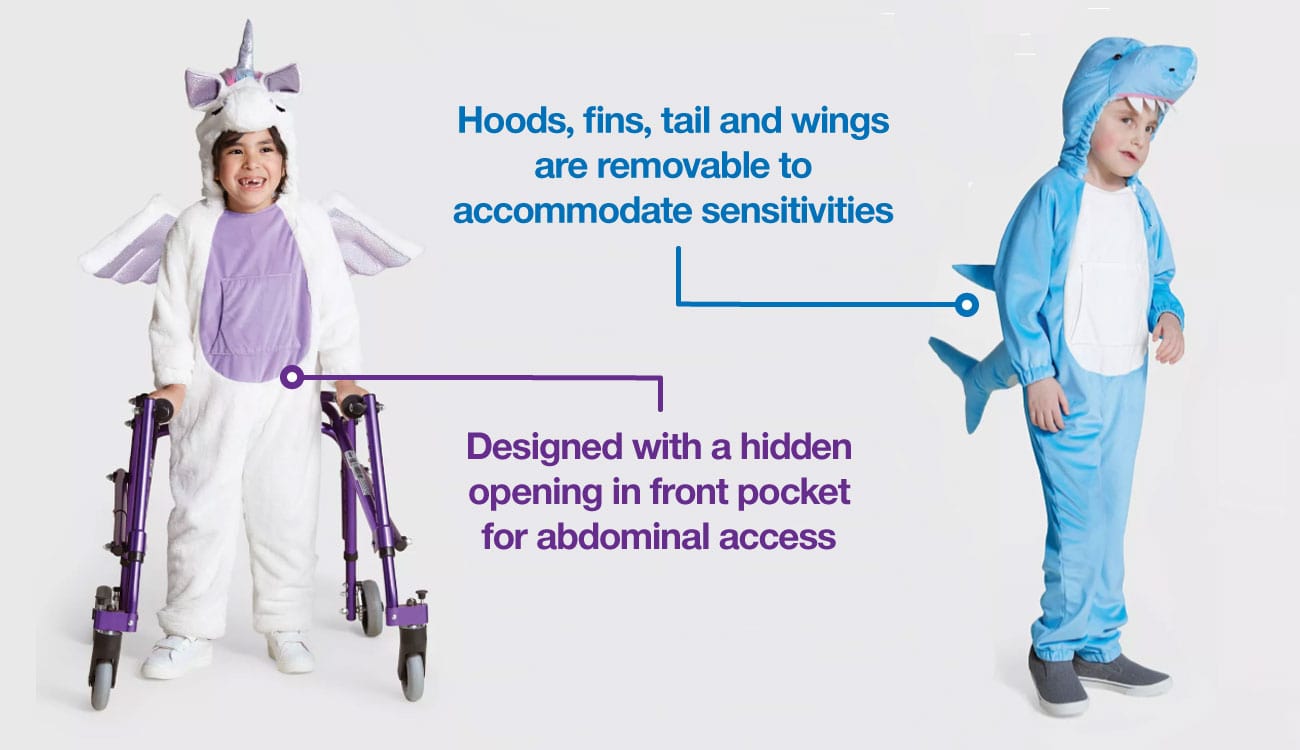
Inclusive Halloween Includes Wicked Wardrobe
Costumes can be itchy and bothersome. Perhaps let your kiddo wear his/her costume around the house for several hours as a test run to ensure that tags are removed, fabrics sit comfortably and nothing is too sensitive.
Also, ensure that masks/hats do not impede sight, pant lengths don’t cause tripping, make-up is allergen-free if needed as color additives are permitted in cosmetics (find more info on FDA.gov), and be cautious of decorative contact lens.
Shopping for adaptive Halloween costumes can be a little daunting. Please read AmeriDisability’s article titled “13 Adaptive Halloween Costumes Still Available on Amazon” for ideas!
Other Inclusive Halloween Reminders & Ideas
- If you are distributing candy, consider setting up your treat bowl closer to the sidewalk for better accessibility, especially for wheelchair users and children with limited mobility.
- Be cautious of masks that are too scary. And be sure masks don’t block your eyes and mouth so you can properly communicate with children who have speech and hearing disabilities.
- Be patient and understanding if a child with gross motor skills needs help grabbing treats out of the bowl.
- Some disabilities are ‘invisible’ so refrain from comments like “Aren’t you too old to be trick-or-treating?” or “Why aren’t you wearing a costume?”
- Don’t forget to have fun beyond the one night of trick-or-treating. Check out these sensory-friendly activities from WonderBaby.org.
- Use extreme caution when carving pumpkins. Sadly, finger/hand injuries are far too common during the Halloween season. As an alternative, use paint, stickers or other non-carving crafting supplies. And, to omit fire hazards, use a non-flammable light source rather than candles to illuminate jack-o-lanterns.
- Ask your little monsters not to snack on candy while trick-or-treating, so you can inspect goodies for safety at home. It’s typically best to stick with commercial-wrapped goodies to ensure that items haven’t been tampered with.
- Consider carrying glow sticks or reflective bracelets, especially if trick-or-treating in a high-traffic neighborhood.
- Only approach homes that are well-lit.
